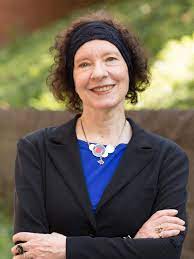Zelizer, Viviana

Bio: (1946-) American sociologist. Viviana Zelizer received her Ph.d. from Columbia University and spent most of her teaching career at Princeton University, where she continues to teach. In his works, Zelizer combines the approaches of three sociological sub-disciplines: family sociology, economic sociology, and historical sociology. In her studies, she examines how, throughout history, the economy and the family have been connected and how that relationship changed over time.
Zelizer opposes the view that he sees the family and the economy as two "separate spheres", where the family is seen as an area characterized by emotions and generosity, and the economy as an area shaped by instrumental rationality and the pursuit of profit. She believes that these two spheres are very connected and that the inherent logic that directs the behavior of individuals within both spheres is not so different. Zelizer believes that ordinary people, legislators, judges, and companies are doing "relational work" in order to differentiate between the spheres of economy and family. Precisely because of the relational work that the actors do, she calls this approach “relational economic sociology”.
Although the theoretical concepts she developed can be applied much more widely, Zelizer focused her studies on the situation in the United States, especially between 1870 and 1930, which she considers a crucial period for the transformation of the relationship between family and economy. During this period, there were many changes - industrialization, urbanization, and monetization - which led to major changes in the economy and the family. The changes that took place in the family in that period are: loss of economic significance (in terms of earning) of the child for the family, development of the idea of the family as an emotional refuge from the outside world, reduction of inequality between men and women, etc. Her empirical methodology consists, above all, of the analysis of documents: newspaper articles, household manuals, court documents, decisions of tax authorities, and the like.
In Morals and Markets (1979), Zelizer examines changes in approaches to life insurance, in order to explore changes in understanding the role of family members. While in the 18th century, families that were left without a father were taken care of by the wider family and neighbors, at the end of the 19th century there was a transformation from a "gift" economy to a market economy. In the market economy, a social expectation has been established that a father, that is, a man, should protect his family even after death. To achieve that, the practice of paying for life insurance spread, so the practice of life insurance, from immoral economic behavior, became responsible behavior towards the rest of the family.
Zelizer examines the economic "price" of the child in the book Pricing the Priceless Child: The Changing Social Value of Children (1985). She studies the price of children in three areas: child insurance, court compensation for accidents in children, and cases of child adoptions. In the nineteenth century, children in working-class families helped economically with paid work and domestic work, so the “price” of a child for his family was proportionate to his economic contribution to the family. In the twentieth century, children stopped contributing economically, both financially and by working in the household, but, on the other hand, court damages became extremely generous. In the modern world children present great emotional and economical investment for the family, especially in the USA with the high cost of childcare and education, but, on the other hand, children become a great source of happiness and emotional support for parents. This change made the “price” of a child proportional to the emotional and economic investment of the family in a child. Because this investment is usually very big children become “sacred” and “priceless”.
Zelizer critically examines Simmel's approach to money in his book The Social Meaning of Money (1994). While Simmel views money as a neutral medium of exchange, Zelizer shows that money is always marked by the actors in relation to: its origin (reward, gift, salary, etc.), the function it performs (which specific type of needs it satisfies), and who money earned or who has the right to spend it. In the same book, she shows how between 1870 and 1930, there was a great change in the legal and real possibilities for women to freely use money in the household. In The Purchase of Intimacy (2005), Zelizer introduces the theoretical concept of "circuits of commerce" which refers to how the relationship between private life and the economy is regulated in different social circumstances, and each social situation has its own specific circuit of commerce. Each circuit of commerce consists of four elements: the relationship between people, the means of exchange, the type of transaction, and the boundaries within which it operates. Actors are constantly doing relational work to determine and define all four aspects, for each of the circuits of commerce.
Fields of research
Actors Children Corporations Death Economy Emotions Family History Industry Market Morality Privacy Rationality Role, Social Work Working Class Everyday LifeTheoretical approaches
Relational SociologyMain works
Morals and Markets: The Development of Life Insurance in the United States (1979);
Pricing the Priceless Child: The Changing Social Value of Children (1985);
The Social Meaning of Money: Pin Money, Paychecks, Poor Relief, and Other Currencies (1994);
The Purchase of Intimacy (2005);
Economic Lives: How Culture Shapes the Economy (2010);
„The Priceless Child Turns Twenty-Seven.” Journal of the History of Childhood and Youth (2012);
„How I Became a Relational Economic Sociologist and What Does That Mean?”, in Politics & Society (2012);
Money Talks: Explaining How Money Really Works (2017).

